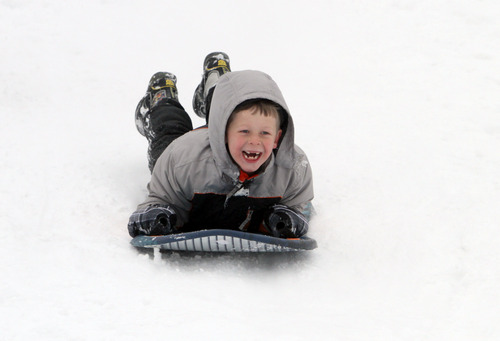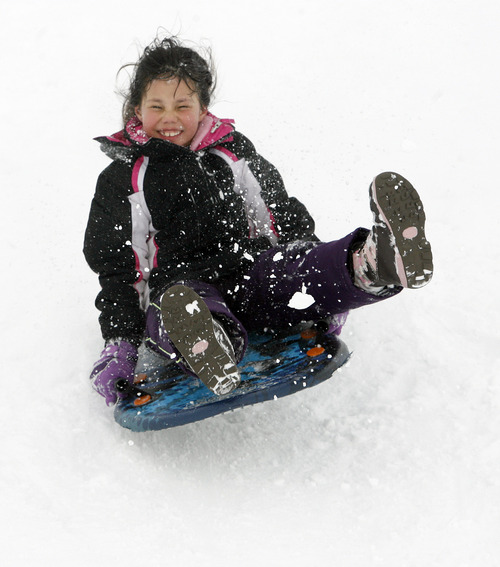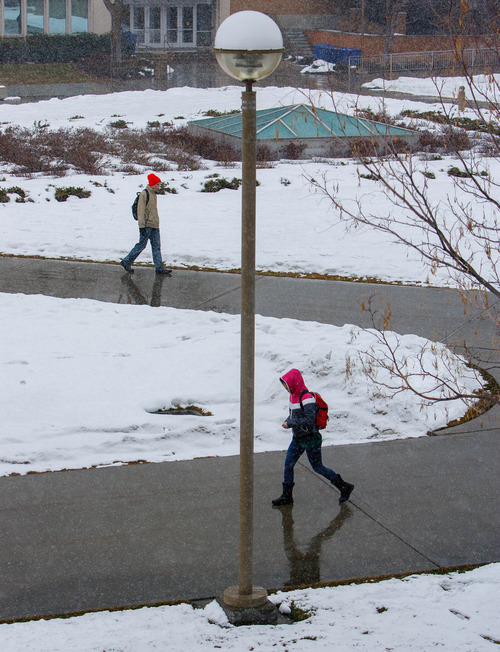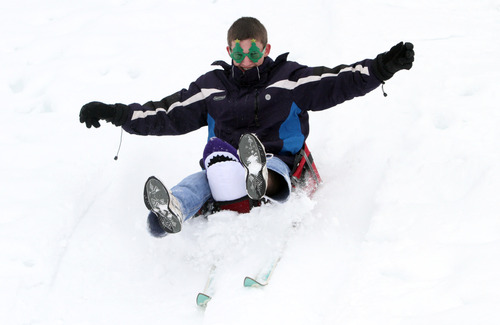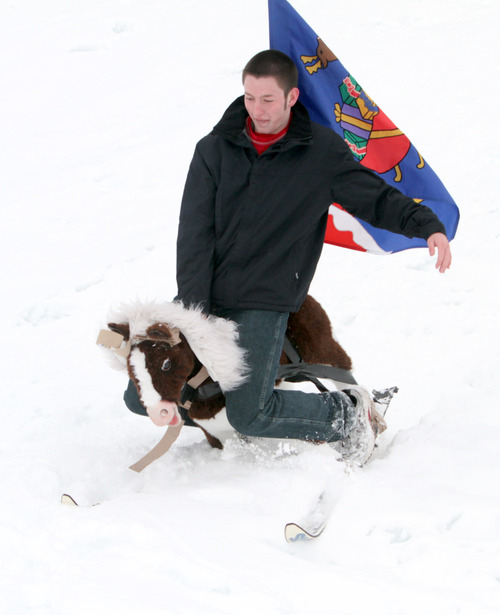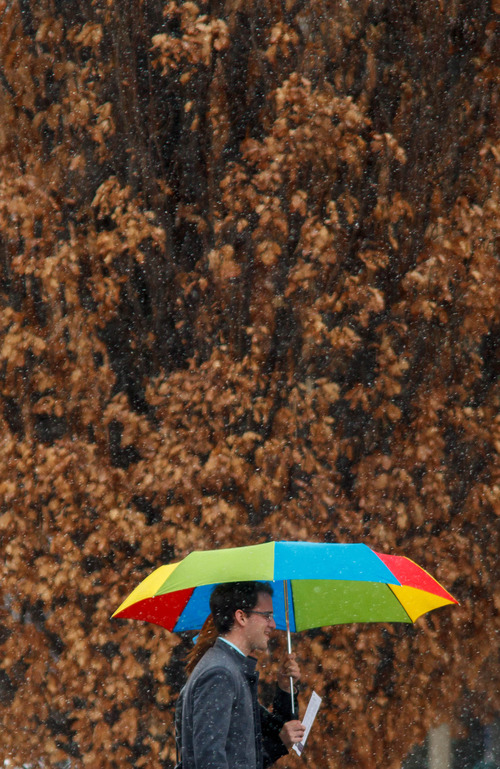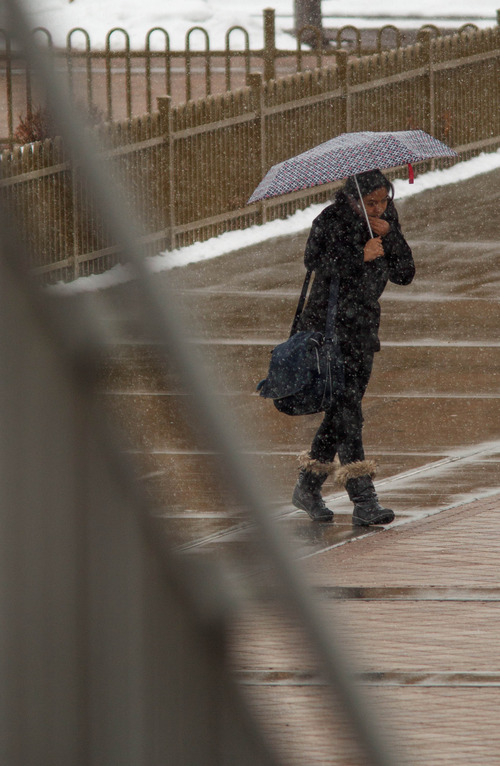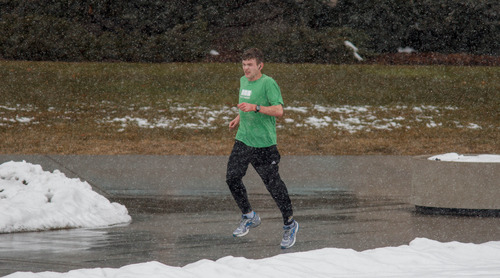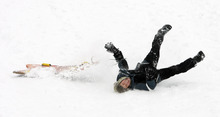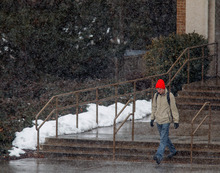This is an archived article that was published on sltrib.com in 2013, and information in the article may be outdated. It is provided only for personal research purposes and may not be reprinted.
Feel free to breathe again — and get ready to shovel.
The slow-moving and intermittent snowstorm that has blown in from California, and is expected to last through the weekend, will have pushed out valley inversions by Sunday, according to the Utah Division of Air Quality. The agency forecasts "green" or healthy air for the state, except in Duchesne and Uintah counties, which is pegged at a "yellow," or moderately unhealthy, level. Still, it's an improvement from the "red," or unhealthy, level it was at before.
Light to moderate snowfall is expected off and on through Sunday night in northern Utah. By the time the system leaves the state, meteorologists with the National Weather Service in Salt Lake City expect it to leave up to 2 feet of fresh powder in the mountains, and 3 to 7 inches in the valleys. Southern Utah also could see some snow through the weekend, according to the NWS. Meteorologists expect only about 1 to 2 inches of accumulation.
Snow began falling across Wasatch Front cities late Saturday afternoon and by 8 p.m. had left a blanket of snow more than 3 inches deep in some locations. Snow totals released by the weather service shows Perry had 3 1/2 inches of new snow, while Clearfield and the Ogden benches got 3.4 inches.
Brigham City, Layton, Provo and Tooele all reported 3 inches of snow. Cottonwood Heights, the Salt Lake City International Airport and Sandy saw less than 2 inches.
In the mountains, Utah ski resorts added between 2 and 8 inches.
The second punch of the storm appeared to be gathering strength on weather service radar Saturday night and Utahns could expect another round of steady snow showers beginning late Sunday morning or early afternoon, NWS meteorologist Chris Young said.
The storm is expected to taper off by Monday, when a ridge of high pressure moves back over the state, he said.
"I'm guessing we may get a little bit hazy, but I don't think we'll get a deep inversion," Young said Saturday night. "I think those are pretty much done for the year."
The threat of snow did not affect departures at Salt Lake City International Airport Saturday morning, although officials advised passengers to check with their airlines ahead of their scheduled flight times. The blizzard battering the northeastern U.S. led to the cancellation of three flights that were due to arrive in Utah on Saturday — specifically, Delta Air Lines flights from Philadelphia, New York and Boston.
The weather service advises commuters to exercise caution on the roads.
Slick and slushy roads were clogged with dozens of accidents on Saturday night, Utah Highway Patrol spokesman Jacob Cox said.
Two UHP patrol cars were also among the vehicles hit on Saturday, bringing the total number of crashes involving troopers to 12 since the start of 2013, Cox said. Both accidents occurred on Interstate 80, west of Salt Lake City, although neither trooper was injured. On Friday, a UHP vehicle was also hit from behind when a driver traveling too fast for the road conditions lost control of his vehicle on Interstate 70 in Sevier County.
Two people were hospitalized late Friday after a collision on U.S. Highway 89 near the border between Sanpete and Utah counties. The crash remains under investigation, but a preliminary assessment indicates that the cars were traveling at speeds too fast for the winter road conditions, the Utah Highway Patrol said.
Besides clean air, the new snow also means a risk for avalanches. The Utah Avalanche Center advises that for Sunday, the Logan and Moab-area mountains are at a considerable risk for slides in the back country. The center also forecasts a moderate risk in all other mountain regions.
Salt Lake City was pegged at a 27-degree high for Sunday, and a high of 26 on Monday; Ogden was forecast for 26 degrees both days; Provo, 23 and 24; Logan, 24 and 22; Wendover, 24 both days; Duchesne, 23 both days; Cedar City, 23 and 27; St. George, 43 and 46; and Moab, 35 and 33 degrees.



